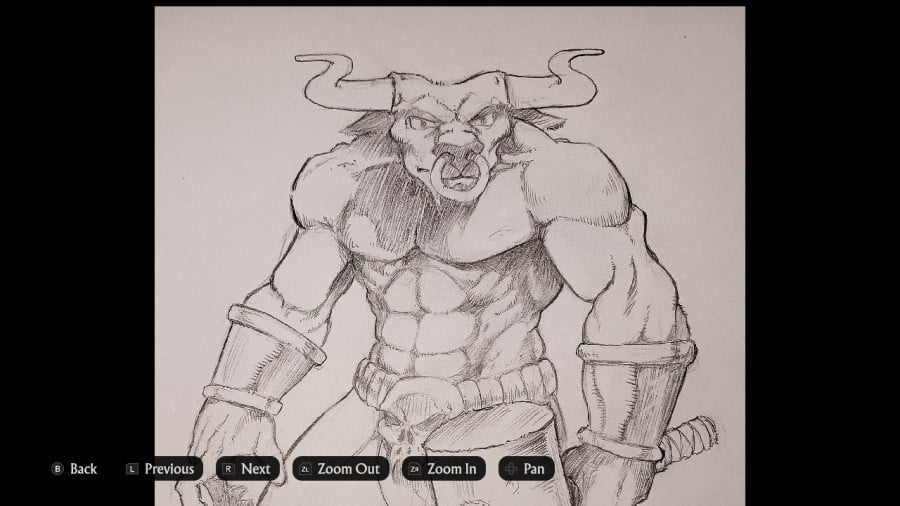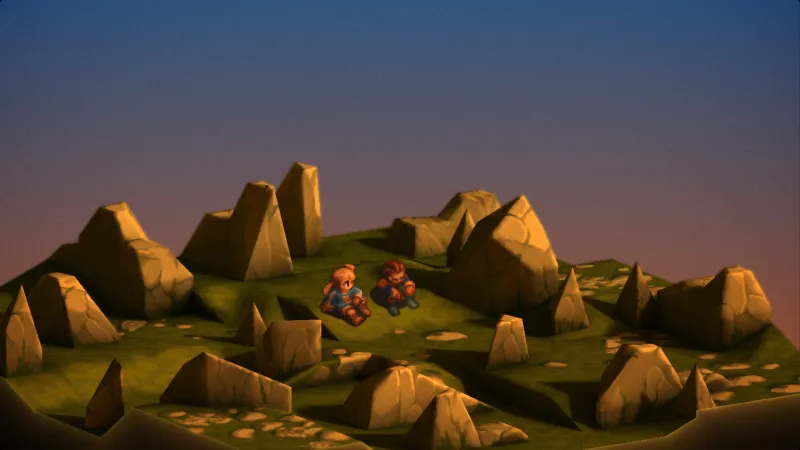
I’m really beginning to wonder just how Nightdive Studios manages to fit in so many awesome projects. Last year, we had no less than five major releases from the team, including The Thing: Remastered, DOOM + DOOM II, and Star Wars: Dark Forces Remaster, and it’s clearly looking to achieve a similar degree of prolificacy in 2025. So far this year, we’ve had I Have No Mouth, And I Must Scream, System Shock 2: 25th Anniversary Remaster, and now – straight out of QuakeCon – Heretic + Hexen.
The latter, published by Bethesda Softworks, is a revamped bundle containing two ‘90s shooters from developer Raven Software (now one of the main studios cranking out Call of Duty titles for Activision). In addition to Heretic and Hexen, you’ve also got both games’ additional content, respectively titled ‘Shadow of the Serpent Riders’ and ‘Deathkings of the Dark Citadel’. Much like its work on DOOM + DOOM II in 2024, Nightdive Studios has also produced two completely new episodes with ‘Heretic: Faith Revived’ and ‘Hexen: Vestiges of Grandeur’.

It’s a compelling package, then, with lots of content on offer. I could lament the lack of Heretic II and Hexen II, but it does make sense to limit this new release to the two id Tech 1 titles. I suspect the sequels may yet return later down the line, should id Software or Nightdive decide to tackle them.
So let’s take a closer look at each main game. Heretic, originally released in 1994, gained reasonable popularity compared to most so-called ‘Doom Clones’ back in the day thanks to its more unique fantasy setting and inventory system. The core gameplay remained instantly familiar though, and under the watchful eyes of producer John Romero, Heretic became something of a cult classic.
With the new Nightdive release, the basic experience remains largely the same, albeit enhanced with the studio’s usual modern gameplay conveniences (like gyro aiming, of course) along with some thoughtful changes made to the basic design. For example, the enemies in the original were relentless bullet-sponges, and often made for a frustrating gameplay experience. Here, they’ve been nerfed considerably, which improves the moment-to-moment pacing of the game, but retains a decent sense of challenge. Basic level aesthetics have also been improved, making for a more visually-pleasing experience.

Moving over to Hexen, this pseudo-sequel originally launched in 1995 (with an N64 version following in 1997) and made some pretty drastic changes to its predecessor. You can choose between three classes: Fighter, Cleric, or Mage, with each demonstrating their own strengths and weaknesses. The levels were also fully interconnected, meaning changes made in one area would also reflect in another.
Again, Nightdive has made some welcome improvements to the overall design of Hexen, including the ability to change your class in-game via designated ‘terminals’; this is a great way to mix things up a bit if you’re getting a bit bored of one particular class. The biggest improvement, however, might not seem so drastic on paper, but it makes a huge difference: map markers.
Thanks to the interconnected levels, Hexen can often feel a little confusing and overwhelming. New players might find themselves just running into walls and pressing ‘Y’ in the hope that you might activate something elsewhere. Adding markers to the maps doesn’t eliminate this entirely; you still have to figure out how to navigate the environment and actually reach your destination, but it does at least remove the sense of trial and error that plagued the original release. If you’re a veteran, you can disable this via the options menu, if you wish.

As mentioned, both Heretic and Hexen gain brand-new content courtesy of Nightdive Studios. These expansions are both excellent and really demonstrate the developer’s understanding of what makes the original games tick. The levels are exceptionally well-designed and, honestly, you’d be forgiven for thinking they were cut content from the main games. I would have been happy to just play Heretic and Hexen with modern improvements, but the additional content here really elevates the package to a whole new level.
In terms of presentation, Nightdive has included all the usual enhancements I’ve come to expect from its remasters, including the ability to toggle between widescreen and 4:3 aspect ratios, various levels of resolution scaling, and even six different crosshair designs. Performance is locked to 60fps and it feels great, though a part of me does wish that we got a native Switch 2 release with 120fps. One step a time, though; I’m sure it’ll come eventually.
Music is also given special treatment here: you’ve got the original soundtracks in all their glory, but you can also swap to an fm synth version, midi synth version, and a completely remixed version from Andrew Hulshult, who also gave us the updated soundtracks for DOOM + DOOM II in 2024. This new version is excellent, and my go-to from now on.

Multiplayer is also included in both titles, and it works pretty well for the most part. You can hop into an online match fairly easily, just be prepared for a bit of jank. You might find yourself teleporting around depending on where your teammates are, while character models can judder around a bit if the connection isn’t stable enough. It’s not the most ideal way to play Heretic or Hexen, but if you’re able to get some pals together, it makes for a pretty fun time.
Finally, a huge shout-out goes to the Raven Vault, a collection of behind-the-scenes documentation for both titles that provides some key background information. It’s not quite as exhaustive as what you might find in the recent System Shock 2 remaster, but you’ve got a good selection of enemy designs, texture sheets, key artwork, and more. Definitely worth checking out if you’re a fan of the originals.
Conclusion
Heretic + Hexen is yet another slam dunk for Nightdive Studios. This new release revamps both titles with modern controls, bonus content, and thoughtful changes to the core design that make each game a delight to play. Granted, these are still FPS titles from the mid-’90s, so your mileage will definitely vary, but for returning fans and those with a particular fondness for old-school ‘boomer shooters’, you really can’t go wrong. Now let’s get a native Switch 2 port with 120fps please, Nightdive.
Source link

